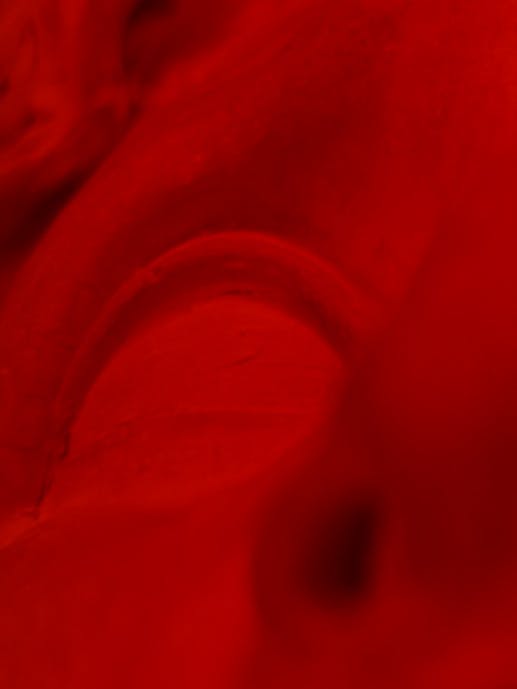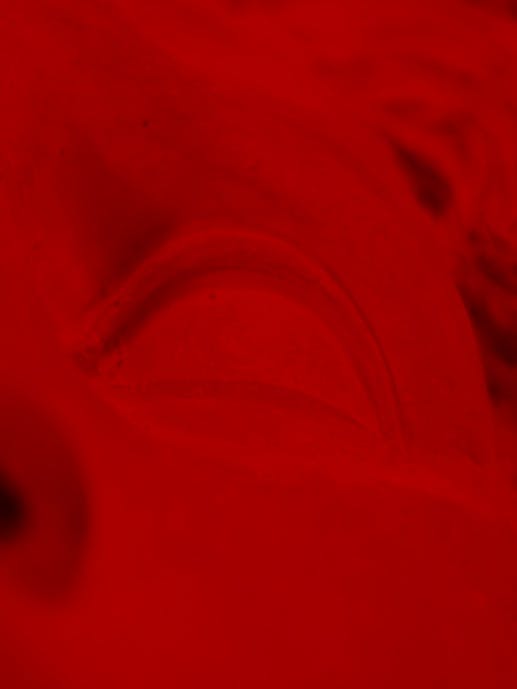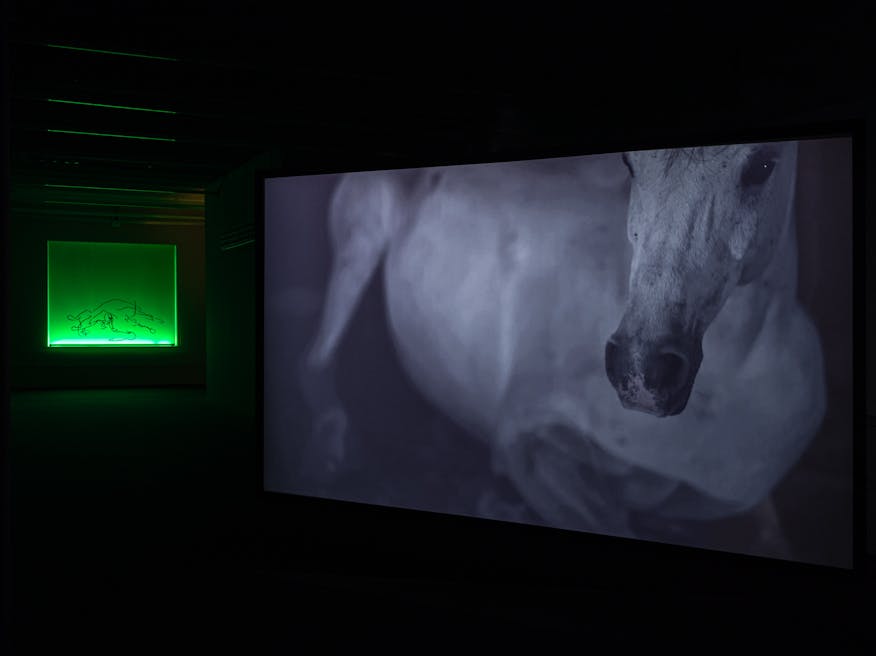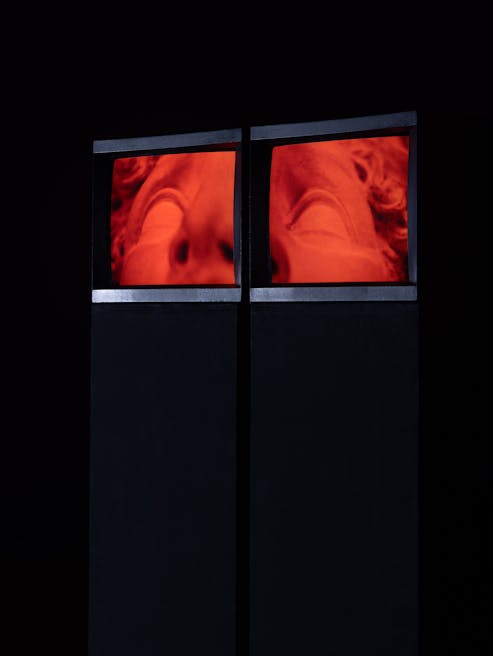NOTTI BIANCHE
2024, SOLO SHOW CURATED BY PAOLA NICOLIN AT XNL, PIACENZA, IT

I can’t stop thinking about the forceps holding wide open Malcolm McDowell’s eyes (Alex, in A Clockwork Orange) while he is forced to watch ultraviolent short film clips. Contrived in an unnatural expressionless gaze, the criminal’s eyes don’t re- veal much of his emotional state. In contrast his mouth, curv- ing into a banana-smile, unveils a certain numbness. There is surprise, perplexity, but not fear in those eyes. After all, Alex is a predator and those terror-stricken eyes do not belong to him but rather to his victims. Science teaches us that alert- ness causes our eyes to open, the greater the anxiety, the wider they get. The brain triggers mechanisms to heighten the senses and as the pupils dilate, the field of vision widens al- lowing more details of the surroundings to be analysed, and thus a better escape or defence. Leaving aside any chemical aspects of the ‘Ludovico Treatment’, it is precisely after the medical treatment, which includes the forced widening of the eyes, that Alex loses his evil instincts and becomes a well-be- haved compassionate human being. Having trained his eyes to open wide, the beast is tamed. The relationship between prey and predator as well as between domestication, bestiality and the re-appropriation of monstrosity are recurring themes in Valentina Furian’s prac- tice - mostly explored with a focus on the relationships be- tween animals, people and man-made environment. 11 This is also the case with the exhibition at XNL Piacenza, which opens with the intimidating gaze of a notoriously furi- ous creature. [...] TEXT BY CATERINA AVATANEO




I am referring to Eclissi (Eclipses), a two-channel video work injected with blood, which shines in the dark from two cathode ray tubes, showing a sequence of shots of Medu- sa’s head kept in the Gypsotheca Museum in Possagno. Her mesmerising eyes overpower the screen. Petrifying and pet- rified, their eternally damned openness is suggested by the film’s red filter, which, together with the colour green, evoke the spectrum of night visions. Nearby, a video entitled Cen- tauro (Centaur) stands proudly, emanating a diffused sound, accompanied arm in arm by Diventare unica (Become unique). Both are suspended in the middle of the exhibition hall and reveal a succession of a series of sculptural details of the body of a white horse. The well-trained muscles, the wrinkles of the toned skin, the oblong muzzle and the velvet eye-lashes look like nocturnal apparitions of a silvery, lunar coat decorated with small speckled constellations whose movements progressively show, in the case of Centaur, a fall of the animal: leaden but graceful, abandoned to a cosmic destiny. In Becoming One, the same horse appears seating. At first almost motionless, gazing into the beyond; then at the verge of collapsing into a sleepy slump. Darkness predomi- nates and seems to suggest a distant dreamlike place or an archaic darkness that lulls the subject and turns it into some- thing mythological: a centaur indeed. In contrast, the camera frames, filmed so close up to the creature, have an evident claustrophobic effect. Upon closer observation, the elegant movements appear to be highly controlled, constrained in a frame whose torpid character acquires anaesthetic notes. And so a hoof that accentuates a trot or the irritated spasm of a blue tail and all the tense muscle, give a suspicious rigidity. What one observes is a majestic but sedated creature, whose wildness dissolves into something as addictively sweet as a chupito in the early hours of the morning. Is it possible that Furian is revealing a devious, snaring ferocity - yet unknown or perhaps just difficult to recognise?. TEXT BY CATERINA AVATANEO


After all the centaur is an allegory of violent instincts and monstrous entanglements between animal and man. Furian, who shot this film in Buenos Aires, stated in an interview: ‘In Argentina, my aim was to analyse the relationship between humans and horses, taking the mythological figure of a cen- taur as a benchmark. The initial transformation of the horse from its wild to a tamed state through training creates a new reality, a new identity: a hybrid. The centaur takes shape from the physical relationship humans set up with their animals. This relationship tuns into a monstrous entity. Then I realised that the creature I was searching for does not exist as a hy- brid between a human body and an animal body, this mytho logical figure emerges from a tamed horse that acts with a new kind of ferocity that is not part of its original behaviour but rather something that comes from this interspecific rela- tionship’. The languid eyes of the creature filmed in such detail, dev- ilishly benevolent, reveal a sort of relaxation testifying to a loss of that state of alertness typical of preys, while the movements and postures remain poised tensely between abandonment 13 and constraint. Like Alex in A Clockwork Orange, the animal is now simply something else. The brief appearance of a tamer brandishing a riding crop reveals the secret ingredient of this transformation. Visitors are also part of the recipe, silent shad- ows and accomplices. TEXT BY CATERINA AVATANEO